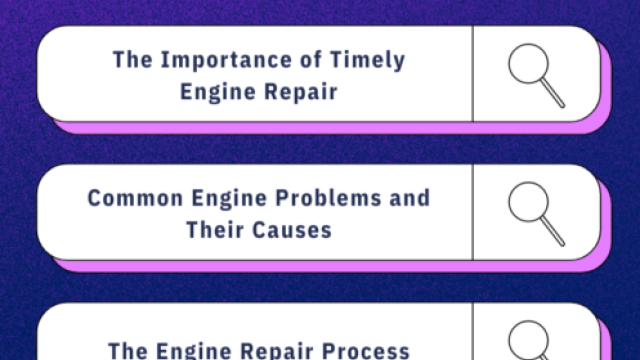How Much Does It Cost To Set Up A Metaverse Platform – By 2024, it’s expected to reach a market size of $800 billion, making it the biggest technological advance. Metaverse is nothing more than pushing the envelope by building a vast environment that closely resembles interactions in the real world. Augmented reality (AR), artificial intelligence (AI), AR cloud, adaptive work procedures, head-mounted displays (HMDs), the Internet of Things (IoT), 5G, and geospatial technologies are a few of the technological advancements that enable the Metaverse’s system.
The cost of the technological infrastructure overlaps with or is linked to earlier versions of the technology as a result of how quickly technologies have advanced over time. As a result, estimating the actual cost is complicated and challenging. The following categories make up the cost of developing the metaverse:
- Infrastructure and data expenses
- Equipment for VR/AR headsets
- Content
- Manpower
However, the price is based on a number of variables and might range anywhere between $10,000 to $400,000 or more. Let’s attempt to comprehend the variables that will determine the Metaverse’s development costs.
Metaverse Features
Building a Metaverse requires cutting-edge technologies like augmented reality, virtual reality, cryptocurrency, IoT, blockchain, and many others. Users must communicate with each other and digital resources in the Metaverse’s augmented reality. It must have the following features in order to enable the same:
Hardware
A virtual reality headset is needed to enter this interactive virtual world because it will instantly move us there. Smartphones, PCs, and laptops can also be used as a method of accessing the Metaverse in addition to VR gear.
Infrastructure
It is crucial to have robust 5G towers that can deliver ultrafast internet speed, more capacity, and exceptionally low latency for us to experience the virtual world in order to guarantee constant connectivity. Similar to how the internet now connects websites, the Metaverse will be interconnected with many people for a seamless experience.
Digital Avatars
Digital avatars are self-portraits made digitally that can convey feelings and sentiments in novel ways. They can be an exact replica of the user or a recreation of a beloved pop culture icon. With the help of these digital avatars, the vast majority of people who use the internet can communicate in a gamified way, exchange experiences and knowledge, and even travel to the most distant corners of the globe.
Security
Internet users have long been concerned about security since cyberthreats have been growing quickly. As a result, it is not only crucial but also absolutely necessary to take cyber ethics, security, and privacy into account when developing the Metaverse ecosystem. Data integrity and safe transactions will become much more crucial. With Metaverse, it is feasible to achieve this. But when it comes to blockchain development, the Metaverse company’s morals, ethics, and beliefs are crucial. These are the fundamental features that are needed to establish the Metaverse; there are many other aspects that could increase the expense of construction.
Factors That Influence The Cost Of Metaverse Development
The appropriate proportions of the slot gacor gampang menang ingredients, as they say, form the perfect dish! The features will determine the overall cost while building a metaverse. Higher investments will be needed to explore new and uncharted paths than to explore those that have already been traveled. As a result, the question of how much the Metaverse will cost to create is left open-ended. Let’s think about and investigate the main variables that will impact the overall cost for the time being.
Metaverse Technology Stack
We require several worlds interacting with one another, as was indicated in the features section. One will need to combine the power of several technologies to make this feasible. Here is a list of some of the necessary technologies.
Virtual Reality
It is one of the most well-liked Metaverse technologies for simulating actual circumstances.
Artificial Intelligence
AI assists in creating digital avatars that facilitate natural interactions and interfaces in the virtual world with a variety of linguistic and cultural accessibility.
Augmented Reality
With the use of this technology, it is now possible to build the real world using virtual input. AR glasses and lenses can enable virtual assistants to augment the real environment with the help of AI.
Blockchain
Digital currency, which is quick and secure, will make it feasible for virtual worlds to have virtual experiences and, consequently, virtual transactions. Blockchain technology is used to enable decentralized digital ownership, transfer, availability, governance, and device interoperability.
3D Modeling
A significant amount of visual design and image gathering are necessary to produce a realistic-looking scene. With the use of computer graphics, 3D modeling makes it possible for users to feel at ease in the virtual environment.
Technical Team
The following are necessary for the creation of the basic Metaverse ecosystem:
Independent Database
- Three to four full-stack developers with experience in React.js and Node.js as well as UI/UX developers
- 1 developer for CRYENGINE, UNREAL, and Unity
- Three 3D modelers (Max3DS developer, Blender)
- 1 decentralized wallet’s developer
The cost of developing Metaverse is affected by all of the aforementioned elements. The price may also change depending on where the development company is located that has the necessary infrastructure and a team of developers with varied skill sets.
When estimating the overall development costs for the Metaverse virtual environment, keep in mind that maintenance and upgrade expenses account for an average of 20% of the total development costs.
How To Develop Metaverse?
As we’ve previously stated, the metaverse is a complicated realm, and creating one necessitates a variety of technologies dependent on the demands of virtual reality. Additionally, it’s crucial to make sure that the Metaverse’s structure supports interoperability and is permanent.
Security is the additional aspect that should be taken into account because it entails transitions. Of course there should be information in the virtual world that accurately represents the experience that is being copied in reality. The broad processes that went into creating the Metaverse are as follows.
Step 1: Choose The Metaverse Platform
You can build your own Metaverse space using existing platforms like Decentrland, Crypto Voxels, and Somnium Space. As an alternative, you can work with a reputable Metaverse development company to create your own unique Metaverse platform from scratch. Although it could cost a little extra, the advantages of having the criteria personalized make it worthwhile.
Step 2: Create The Virtual Environment
It’s time to create the place, which could take the form of an application, a virtual meeting area, or a virtual home theater, after the platform has been chosen. The emphasis should be on 3D designing and VR development while creating a 3D virtual space.
Step 3: Build The Interoperability Layer
The Metaverse is really about interaction among the various virtual places. At this stage, the interoperability standards layer allows the processes to communicate and exchange data that is useful to both people and machines. Blockchain technology enables the incorporation of payment gateways for virtual currency transactions, enabling secure, open, and decentralized transactions.
To Sum Up
The concept of the metaverse has evolved. Since this universe is already here, anyone can access it. Although the concept is not entirely original, this creative approach is unique and is always changing.
Experts in technology foresee that the Metaverse will benefit from a number of new developments in the future, enabling the development of several advantageous use cases that will improve the Metaverse’s capacity to function in real life.




